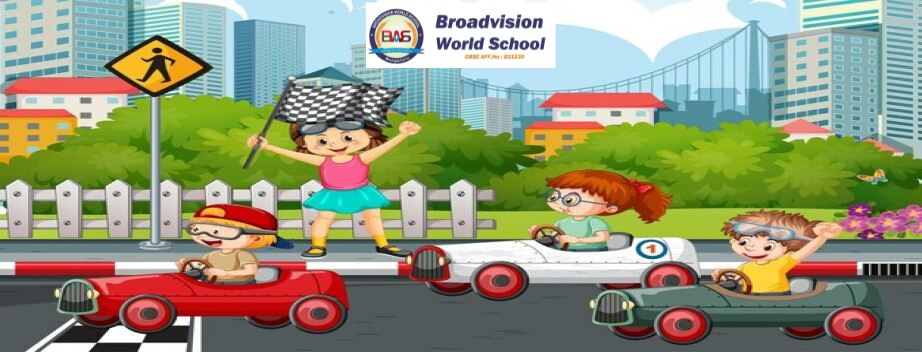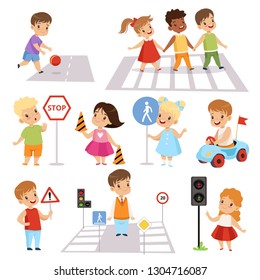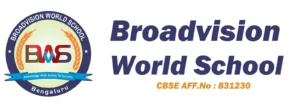Giving your child the best start in life
-
First Floor, 10A Chandos Street London New Town W1G 9LE
Get In Touch
Monday to Friday: 8.30am – 02.00pm
Saturday, Sunday: Close
Email: user@domainname.com
Phone: +44 (0) 207 689 7888

Road and Safety Rules are the foundation of road safety, and educating children about these rules is crucial. In this article, we’ll explore the importance of teaching traffic rules to children, the key safety rules they should know, and how parents, teachers, and communities can effectively impart this essential knowledge.
Before diving into the specifics of why teaching traffic rules to children is vital, let’s first understand what these rules entail. Traffic rules encompass a range of guidelines designed to ensure the orderly and safe flow of vehicles and pedestrians on the roads. These include:
Teaching traffic rules to children from an early age has numerous benefits. Children are like sponges, absorbing information quickly and retaining it for long periods. Early education on traffic rules ensures that safety becomes second nature to them.
One of the primary reasons for teaching children traffic rules is to prevent accidents. Children who understand the rules of the road are less likely to engage in dangerous behaviors that could lead to accidents.
Learning about traffic rules helps children develop responsible behaviors. They learn the importance of following rules not just for their safety but for the safety of others as well. This sense of responsibility often extends to other areas of their lives.
 Road safety education is crucial for children, and Broad Vision World School has implemented a comprehensive program to ensure its students understand and follow essential traffic rules. The school uses a multi-faceted approach to teach road safety, combining theoretical lessons, practical exercises, and community involvement. Here’s how they do it:
Road safety education is crucial for children, and Broad Vision World School has implemented a comprehensive program to ensure its students understand and follow essential traffic rules. The school uses a multi-faceted approach to teach road safety, combining theoretical lessons, practical exercises, and community involvement. Here’s how they do it:Broad Vision World School incorporates interactive classroom lessons into their curriculum. These lessons cover a variety of topics, such as:
To reinforce classroom learning, the school organizes practical demonstrations. These include:
Broad Vision World School regularly hosts workshops and seminars conducted by road safety experts. These sessions provide valuable insights into:
Safety drills are an integral part of the school’s road safety program. These drills simulate real-life scenarios to teach students how to respond appropriately. For instance:
Visual aids play a significant role in helping students remember and understand Road Safety Rules. The school utilizes:
Broad Vision World School believes in involving parents and guardians in the road safety education process. The school organizes:
The school participates in and organizes various road safety campaigns. These campaigns aim to raise awareness and involve the entire school community. Activities include:
To make learning fun, the school integrates traffic safety games and mobile apps into their curriculum. These interactive tools help students:
Broad Vision World School ensures that students who use school transport are educated about bus safety. Key aspects include:
The school collaborates with local traffic authorities to enhance their road safety program. This partnership includes:

Broad Vision World School’s comprehensive approach to Road Safety Education ensures that students are well-equipped with the knowledge and skills they need to stay safe on the roads. Teaching traffic rules to children is not just about preventing accidents; it’s about instilling lifelong habits that promote safety and responsibility. By understanding and following traffic rules, children can protect themselves and contribute to a safer community. The involvement of parents, teachers, and the community is crucial in this educational journey. Through consistent education, interactive learning tools, and positive reinforcement, we can ensure that children grow up with a strong sense of road safety.
What are some basic traffic rules for children?
Basic traffic rules for children include looking both ways before crossing the street, using pedestrian crossings, understanding traffic signals, staying on sidewalks, and not distracting drivers.
How can parents teach traffic rules effectively?
Parents can teach traffic rules by leading by example, using stories to explain the importance of safety, engaging in interactive learning activities, and consistently encouraging safe practices.
Why is it important for schools to include traffic safety in their curriculum?
Including traffic safety in the school curriculum ensures that all children receive structured and comprehensive education on road safety, helping to prevent accidents and promote responsible behavior from a young age.
What are the benefits of children learning traffic rules early?
Early education on traffic rules helps children develop safety habits, understand the importance of following rules, prevent accidents, and cultivate a sense of responsibility towards themselves and others.
How can communities contribute to teaching traffic safety to children?
Communities can contribute by organizing traffic safety campaigns, involving schools in educational programs, distributing educational materials, and creating safe environments for children to learn and practice road safety.
Comments are closed